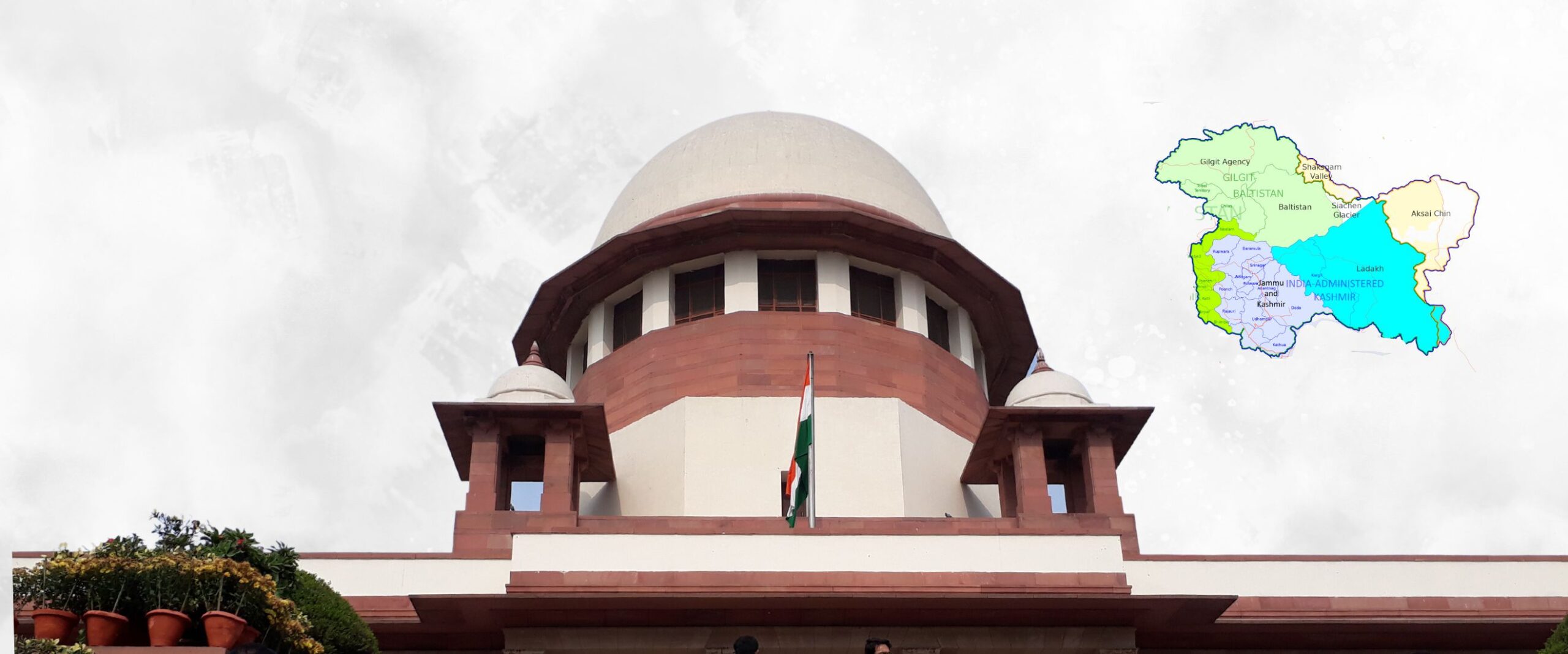Analysis
Article 370 in the Supreme Court
On August 5th, Article 370 of the Constitution was abrogated vide a Presidential Order, revoking the special status of Jammu & Kashmir.

On August 5th, the Union diluted Article 370 of the Constitution of India via a presidential order. Article 370 provided special status to the State of Jammu and Kashmir, allowing it to have its own constitution and autonomy over internal administration.
PILs challenging the constitutionality of the Union’s actions have already been filed in the Supreme Court, by advocate ML Sharma and the National Conference. This is not the first time Article 370 has been in the apex court. This short post examines five key Supreme Court cases from the past. But first, a quick refresher on what happened on 5 August.
What did the Union do on 5 August?
Article 370(3) prevents the Union executive from amending Article 370 without the concurrence of the Jammu & Kashmir Constituent Assembly. However, the Jammu & Kashmir Constituent Assembly dissolved in 1957. Without any way to get the Constituent Assembly’s concurrence, the Union had to innovate:
- On August 5th, the President issued The Constitution (Application to Jammu And Kashmir) Order, 2019 CO 272 that replaces the term ‘Constituent Assembly’ from Article 370(3) with ‘Legislative Assembly [of Jammu & Kashmir]’. The Order technically amends the interpretation clause Article 367, not Article 370 itself (it uses Article 370(1) to do so).
- On the same day, BJP MP Amit Shah invoked CO272 to introduce a Statutory Resolution in the Rajya Sabha that abrogates most of Article 370. This was possible without the Jammu & Kashmir Legislative Assembly’s concurrence because the State was under President’s rule.
- On 6 August, Parliament passed the Jammu and Kashmir Reorganisation Bill, 2019 that bifurcates the State into two Union Territories: Jammu & Kashmir and Ladakh. The former is provided with a legislative assembly.
Gautam Bhatia, ‘The Article 370 Amendments: Key Legal Issues’ (Indian Constitution Law and Philosophy: 5 Aug 2019) <https://indconlawphil.wordpress.com/2019/08/05/the-article-370-amendments-key-legal-issues/> accessed on 11 Aug 2019
5 Cases to Read on Jammu & Kashmir’s Special Status
Prem Nath Kaul v. Jammu & Kashmir (1959)
- Challenge to Big Landed Estates Abolition Act, 1950 on the ground that it was unconstitutionally enacted by Maharaja Yuvraj Karan Singh (Hari Singh’s son)
- The Supreme Court upheld the Act
- On Article 370, the court held that the Maharaja’s plenary legislative powers were not limited by Article 370
Sampat Prakash v. Jammu & Kashmir (1968)
- Challenge to 1959 and 1964 Presidential Orders made under Article 370(1) that extended the operational period of Article 35(c). Article 35(c) made preventive detention legislation immune in Jammu & Kashmir from fundamental rights claims.
- The petitioner made two primary arguments:
- Article 370 ceased to exist after Jammu & Kashmir Constituent Assembly dissolves in 1957
- Even if Article 370 persists, President’s power to amend orders under Article 370(1) ceased after the Jammu & Kashmir Constitution came into force
- The Supreme Court upheld the Presidential Orders:
- Article 370 will only dissolve upon the recommendation of the Constituent Assembly under Article 370(3)
- The power to issue orders includes the power to add, amend, vary or rescind them because the General Clauses Act, 1897 applies to the Constitution
Mohd. Maqbool Damnoo v. Jammu & Kashmir (1972)
- Challenge to the Jammu & Kashmir Preventive Detention (Amendment) Act, 1967 for violating Article 370(1): failed to receive the assent of the Sadar-i-Riyasat
- Explanation: in 1952, the Jammu & Kashmir Constituent Assembly replaced the Maharaja with the Sadar-i-Riaysat as the executive head.
- The Supreme Court upheld the amendment, as it had received the Jammu & Kashmir Governor’s concurrence
- While Article 370(1) refers to the Sadar-i-Riyasat, the 1965 amendment to the Jammu & Kashmir Constitution provides for the appointment of a governor instead of a Sadar-i-Riyasat. Further, Article 367 of the Indian Constitution was amended to the effect of making references to Sadar-i-Riyasat mean governor.
- Appeal to Jammu & Kashmir High Court judgment that ruled that provisions of the Securitisation and Reconstruction of Financial Assets and Enforcement of Security Interest Act, 2002 do not apply to Jammu & Kashmir.
- The Supreme Court overturned the judgment, holding that Parliament had legislative competence to enact the provisions because India’s Constitution is superior to Jammu & Kashmir’s.
- The court held that Article 370(1)(b) does not limit Parliament’s power because the Constitution of India is applicable to Jammu & Kashmir via the 1954 Presidential Order.
Dr. Charu Wali Khanna v. UOI (pending)
- Challenge to permanent residency laws in Jammu & Kashmir, i.e. validity of Article 35A
- The petitioners raise two primary grounds:
- Extra-constitutional: introduced illegitimately via 1954 Presidential Order
- Discriminates against women: empowers Article 6 of the Jammu & Kashmir Constitution
Resources
- Read more about the Challenge to the Abrogation of Article 370Here
